Your Ultimate Guide to the Great Wall of China: The Dragon’s Trail
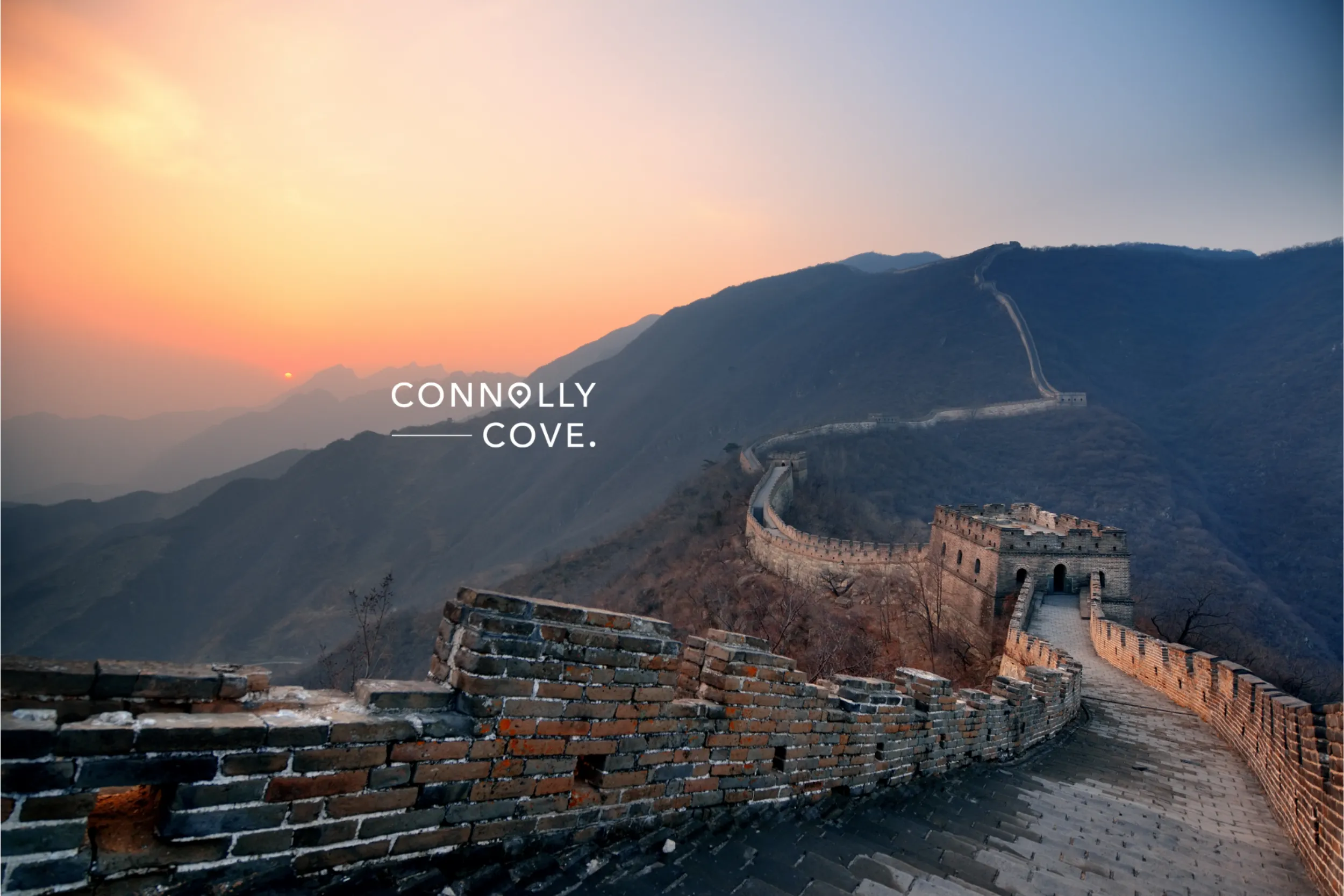
Updated On: April 30, 2024 by Asmaa Alhashimy
For many, the Great Wall represents more than just an ancient relic; it is a bucket-list symbol and a pilgrimage journey into the heart of Chinese history and culture.
Once a series of walls and fortifications built to protect Chinese states and empires against various nomadic groups, today, it stands as a source of inspiration and awe, not only for its staggering scale but also for the myriad stories and legends woven into its centuries-old stones.
In this comprehensive guide, we will journey to the Great Wall not merely as a static monument but as a dynamic tourist attraction that offers a multitude of experiences and challenges. Join us as we unfold the story of the Great Wall of China and reveal how you can make the most of your journey along this ancient wonder.
Table of Contents
Overview of The Great Wall of China
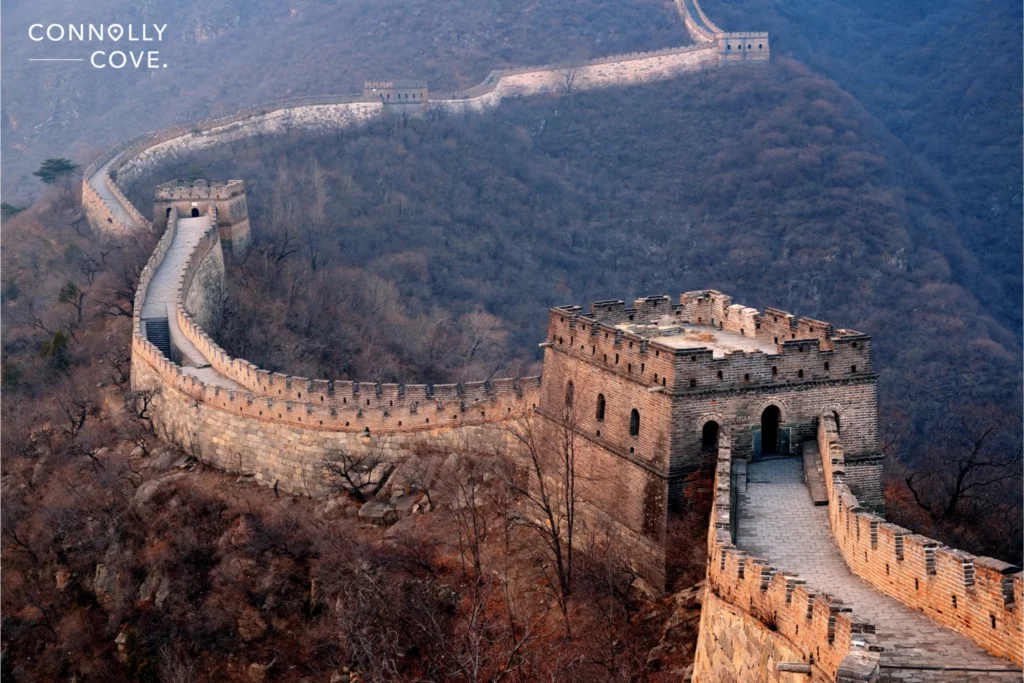
The Great Wall is not a continuous line but rather a network of walls and trenches, with natural defensive barriers like hills and rivers incorporated into the system. Built over centuries by several dynasties, the wall is not just a physical barrier but also a symbol of China’s rich history and cultural heritage.
The Great Wall was constructed using various materials, predominantly stone, brick, tamped earth, wood, and other materials. It features defensive installations such as watchtowers, barracks, and garrison stations.
The Length of the Great Wall
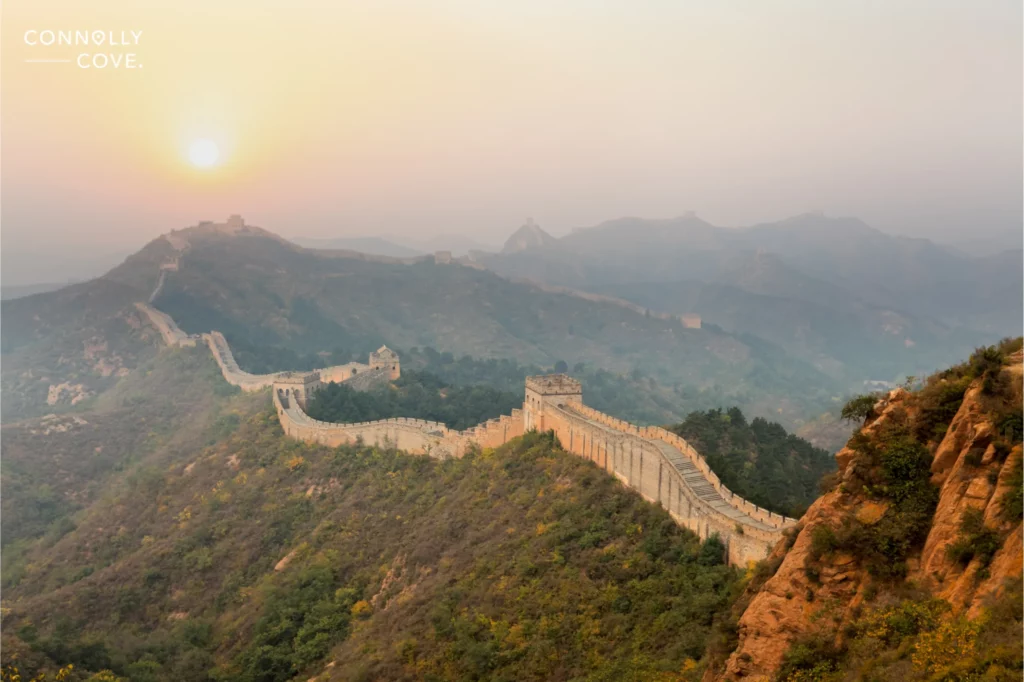
The exact length of the Great Wall has been the subject of much debate, but according to a comprehensive archaeological survey, the entire Great Wall is estimated to stretch for around 21,196 kilometres (13,171 miles). This distance also encompasses the natural defensive barriers like rivers and mountains that were integrated into the system.
The Course of the Great Wall
Located in northern China, the Great Wall meanders over deserts, grasslands, mountains, and plateaus, stretching from the east to the west of China. Starting in the east on the banks of the Yalu River in Liaoning Province, the wall stretches to the western limit of the Gobi Desert at Jiayuguan.
The wall traverses 15 regions and provinces—Heilongjiang, Jilin, Liaoning, Inner Mongolia, Beijing, Tianjin, Hebei, Shanxi, Shaanxi, Ningxia, Gansu, Qinghai, Hubei, and Hunan.
The Significance of the Great Wall
The wall served as a formidable barrier to protect China’s northern border from nomadic tribes, such as the Mongols. It is a powerful symbol of China’s enduring strength and resilience, often depicted in literature, art, and folklore.
Today, the wall is recognised as a UNESCO World Heritage site and is one of the most awe-inspiring and sought-after tourist destinations on the globe. It draws millions of visitors each year, contributing to China’s economy and the preservation of historical sites.
History of the Great Wall of China
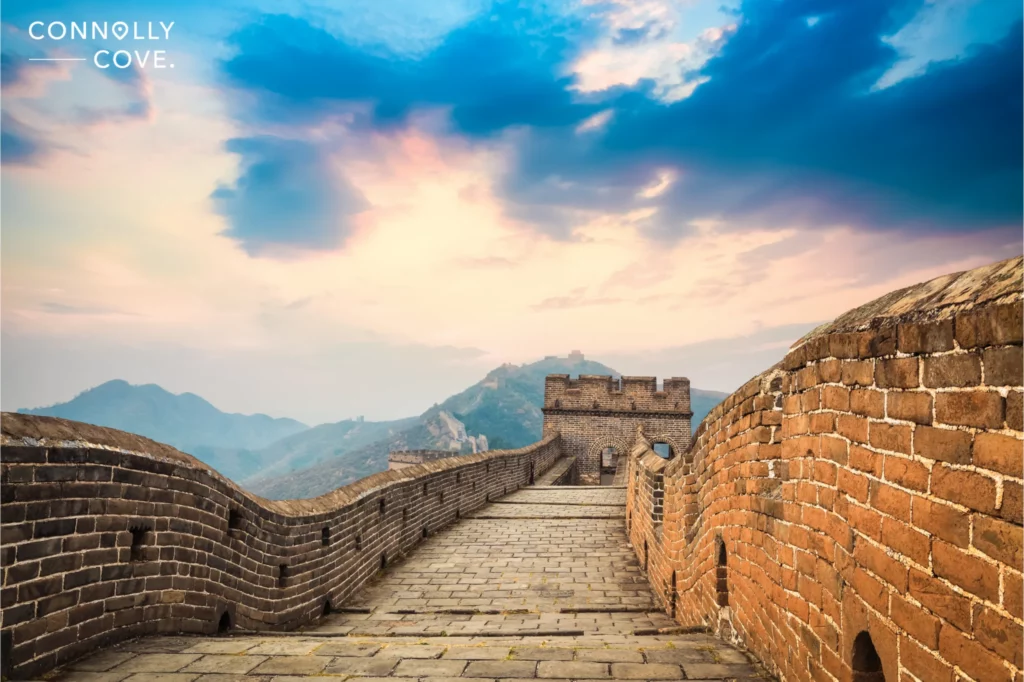
The history of the Great Wall of China is as long and serpentine as the structure itself. The wall’s beginnings can be traced back to the 7th century BC when various states constructed disparate wall fragments to fend off the incursions of nomadic tribes from the north.
Early Walls
The construction of the early walls that would eventually become part of the Great Wall of China did not start as a single, unified project. Instead, the work began during the Spring and Autumn Period and intensified during the Warring States Period. These were times of great conflict and political fragmentation in Chinese history.
A. Spring and Autumn Period (771-476 BC)
During the Spring and Autumn Period, the Zhou Dynasty’s weakening control led to the rise of regional lords who began to assert their power and often warred with one another. To defend their territories, some of these states started constructing walls and fortresses.
B. Warring States Period (475-221 BC)
The process continued into the Warring States Period, which saw the landscape of China divided among seven major states: Qin, Zhao, Han, Wei, Chu, Yan, and Qi. Each state built and maintained its own defensive walls to protect against both military incursions from rival states and raids by non-Chinese nomadic tribes from the north.
Construction During the Qin Dynasty (221–206 BC)
The unification of China under the rule of Emperor Qin Shi Huang marked the beginning of the Great Wall as a national project. During the Qin Dynasty, the existing walls were connected, extended, and reinforced to create a unified defence system. The Qin Wall stretched from Gansu province in the west to Liaoning province in the east.
The construction of the original wall during the Qin Dynasty was an immense endeavour, mobilising hundreds of thousands of soldiers, prisoners, and commoners. They used whatever materials were available locally, such as earth, stones, and even sand, forming the basis of the wall as it is known today.
Extension During the Han Dynasty
The Han Dynasty (206 BC–220 AD) saw the Great Wall extend even further, pushing the boundaries into the Gobi desert to facilitate the protection and development of the Silk Road trade routes.
The Han Wall extended westward into Gansu province and eastward into Korea. It also stretched south into Hebei province. The Han fortifications were more robust, utilising a mix of rammed earth and bricks.
Expansion in the Ming Dynasty (1368–1644)
The most extensive and enduring construction of the wall occurred during the Ming Dynasty, after a humiliating defeat by the Oirat Mongols at the Battle of Tumu in 1449. The Ming emperors focused on building a stronger wall to prevent any future incursions.
The Ming Wall stretched from Gansu province in the west to Hebei province in the east. It also stretched north into Inner Mongolia. The Ming Wall was over 8,000 kilometres long and was made of stone and brick. It was also much more substantial than the Qin Wall, with towers, forts, and other structures built along its length.
Decline in the Qing Dynasty (1644-1912)
After the Ming Dynasty, the Great Wall lost its military relevance as the Qing Dynasty (1644-1912) expanded China’s borders well beyond the wall and into much of what constitutes modern-day Mongolia.
Consequently, the wall was left to the ravages of time and natural decay. It wasn’t until the 20th century that recognition of the wall’s historical significance prompted efforts to preserve it.
Restoration and Protection of the Great Wall
Preserving the Great Wall and protecting it from erosion and tourist-related wear and tear is an ongoing challenge. The Chinese government, along with various organisations, has implemented measures to ensure the long-term survival of this cultural treasure.
The Experience of Visiting the Great Wall of China
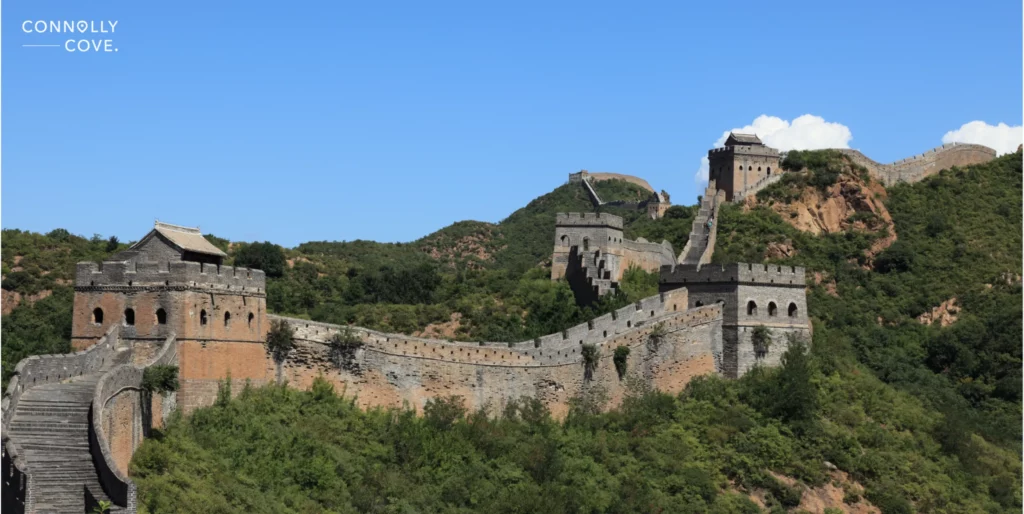
Visiting the Great Wall of China is an experience like no other. It offers a fascinating glimpse into ancient China’s history and culture, as well as breathtaking views of the surrounding landscapes. Walking along the wall, exploring its watchtowers, and learning about its construction is a memorable and educational adventure.
Visiting the Great Wall of China is not only an opportunity to explore the rich history of ancient China but also a chance to witness one of the most awe-inspiring wonders of the world. It is a testament to human ingenuity and perseverance. Below is a comprehensive guide to visiting the Great Wall of China and getting the best out of this experience.
Choosing the Right Section
Navigating the vast expanse of the Great Wall can be a daunting task, given its length and the variety of experiences each section offers. Many sections of the Great Wall are accessible to visitors, with some of the most popular ones located near Beijing.
Consider factors like distance from Beijing, crowds, and desired level of difficulty when making your choice. Popular sections include Badaling, Mutianyu, Simatai, and Jinshanling. Here’s a detailed guide for some popular sections:
1. Badaling
For starters, Badaling is the most famous and accessible section, well-equipped with facilities and restoration. Its proximity to Beijing makes it a magnet for tourists, which means it can get very crowded. Despite this, its ease of access, including a cable car and sections that are wheelchair-friendly, makes it an excellent choice for those with limited time or mobility.
2. Mutianyu
For a family outing, Mutianyu presents a more serene and visually rewarding experience. It strikes a balance between accessibility and a less touristy ambience. With a cable car and a unique toboggan ride, it is both convenient and entertaining for visitors of all ages. The fall season, with its fiery foliage, makes Mutianyu exceptionally picturesque.
3. Jinshanling to Simatai
Adventurers and photography enthusiasts might gravitate towards the Jinshanling to Simatai stretch. This part of the wall offers a mix of restored and untouched paths that provide an authentic feel of ancient China.
The hike between these sections is rigorous but rewarding, with stunning views and fewer crowds. Simatai is also unique in that it offers night tours, allowing a rare glimpse of the wall illuminated under the stars.
4. Other Notable Sections
Huanghuacheng, for example, offers distinct experiences with parts of the wall descending into a lake. Jiankou boasts a raw, unadulterated state ideal for experienced hikers. Gubeikou, less frequented by tourists, has a rich military history for those looking to delve into the past.
Best Time to Visit the Wall
The best time to visit the Great Wall of China is during spring (April to May) and fall (September to October). The weather during these seasons is favourable, with mild temperatures and less rainfall. Avoid visiting during summer as the temperature can be hot, and in winter, the wall may be covered in snow.
Transportation to the Wall
The Great Wall is located outside of Beijing, and transportation options vary depending on the section you choose. For Badaling and Mutianyu, public buses or taxis are readily available. For Simatai and Jinshanling, consider hiring a private car or joining a tour group.
Essential Information for Tourists
- Visas: Most visitors must apply for a tourist visa (L Visa) before arriving in China. Ensure your passport is valid for at least six months beyond the date of entry.
- Travel Insurance: It’s advisable to purchase comprehensive travel insurance covering medical expenses, accidents, and trip cancellations.
- Currency: The Chinese yuan (CNY) is the official currency.
- Language: Mandarin is the official language. Learning a few key phrases or having a translation app can be helpful, although major tourist sections often have English signage and guides.
- Connectivity: Consider renting a portable Wi-Fi device or purchasing a local SIM card, as internet access can be irregular.
- Cultural Considerations: Familiarise yourself with basic Chinese etiquette, such as greeting customs, tipping practices, and public behaviour norms.
What to Bring: A Guide for Hikers and Casual Visitors
- Comfortable Footwear: Sturdy walking shoes or hiking boots are essential, as the wall’s surfaces can be uneven and steep.
- Weather-Appropriate Clothing: Dress in layers—even in warmer months— as it can be windy on the wall. Bring a waterproof jacket if visiting during the rainy season.
- Sun Protection: It is recommended to bring sunscreen, sunglasses, and a hat, as the wall offers little shade.
- Hydration and Snacks: Bring plenty of water and some energy-boosting snacks, especially if you plan to hike longer sections, as facilities can be sparse.
- Cash: Small bills are useful for entrance fees, local vendors, and restroom facilities.
- Camera and Binoculars for capturing the scenery and observing distant features of the wall.
- Backpack: A comfortable backpack can carry your essentials without hindering movement.
- Navigation Tools: A map or a GPS app that works offline can be handy, especially in less touristy sections.
- First Aid Kit: Pack basic first aid supplies, especially blister plasters and any personal medications.
Can the Great Wall of China be Seen from Space?
The notion that the Great Wall of China can be seen from space with the unassisted human eye is one of the most enduring legends about this historic structure. This claim has been widely circulated and often appears in popular culture and trivia lists. However, the reality is more nuanced and requires some clarification.
Low Earth Orbit
From the low Earth orbit, which is about 160 to 2,000 kilometres (100 to 1,200 miles) above the Earth’s surface, astronauts can indeed see the Great Wall, but only under specific conditions. The wall is more easily discernible from this distance in areas where it contrasts with its surroundings, but it is not uniquely distinguishable from many other human-made objects.
From the Moon
The myth often suggests that the Great Wall can be seen from the Moon with the human naked eye, which is not the case. The Moon is approximately 384,400 kilometres (238,855 miles) from Earth, and at that distance, no human-made structure is visible to the unaided eye.
The confusion may stem from the fact that the Great Wall is indeed massive and one of the largest building endeavours ever undertaken by humans. It snakes through diverse terrain over considerable distances. However, when it comes to visibility from space, it is relatively narrow and lacks the necessary contrast to stand out against the vast natural landscape when viewed without assistance.
More of China’s Wonders
As a bucket-list destination, the Great Wall of China offers more than just scenic views and a journey through verdant hills and rugged terrains—it offers a path walked by the echoes of history and a connection to the countless lives that have shaped and been shaped by its existence.
With its panoramic vistas and undulating pathways, the Great Wall is not merely a structure to be seen but an experience to be felt. Each brick tells a story, each watchtower surveys the passage of time, and every visitor leaves with a sense of awe.
So, if you’re planning a trip to Beijing or exploring northern China, make sure to include a visit to the Great Wall of China in your itinerary. Aside from exploring the Great Wall of China, there are many other travel ideas and inspiring destinations to discover in China. From China’s hidden gem, Xi’an, to the wonderous Shenzhen city, China offers a rich and diverse travel experience.






